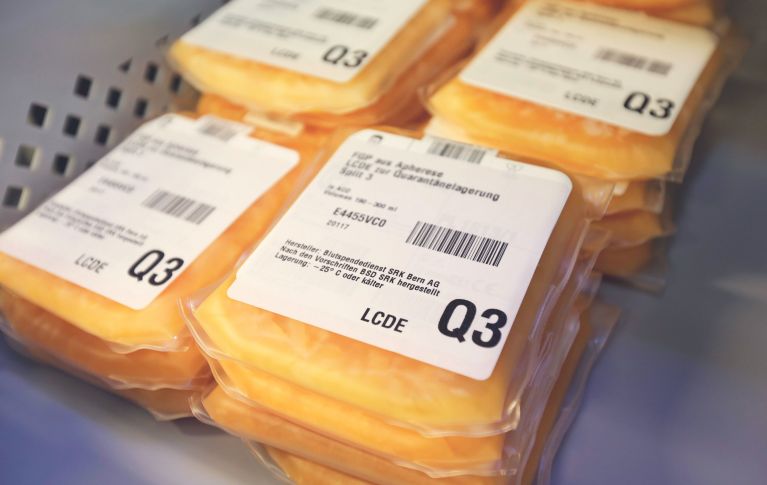Types of donation
Whole blood donation is one of several types of blood donation.

Whole blood donation
This is the classic type of blood donation. It involves drawing circa 450 millilitres of blood from the donor. This is the type of donation that is most in demand. Multiple blood products are prepared from donated whole blood; which product a patient needs depends on the clinical picture of that person’s disease.
Length and frequency of whole blood donation
It takes around 45 minutes to complete all steps in the blood donation process. The interval between two blood donations should normally be 10 to 12 weeks (typically, three times per year for women, four times per year for men).
Thrombocyte donation
Thrombocyte (platelet) donation involves the collection of thrombocytes (blood platelets) from a donor using a cell separator. The thrombocytes are extracted from the blood and the other blood components are returned to the body.
Length and frequency of thrombocyte donation
It takes about 60 to 90 minutes to extract a sufficient quantity of thrombocytes from the blood. The donation involves the collection of approximately 500 millilitres of this blood component. Since a healthy body will replenish its thrombocytes within just a few days, thrombocyte donors can normally donate again after a 14-day wait.


Plasma donation
Like thrombocyte donation, plasma donation involves an apheresis machine, which separates the plasma from the other blood components in a centrifuge. The blood cells are subsequently returned to the body. Depending on the donor’s weight, up to 650 millilitres of plasma are collected in a plasma donation.
Length and frequency of plasma donation
Plasma donation takes around 40 minutes. Since the body loses only very small quantities of blood cells in this kind of donation, people can generally donate again after a two-week wait.
Further information
Your regional blood transfusion service can provide further information about the types of donation and tell you when and where you can donate.
